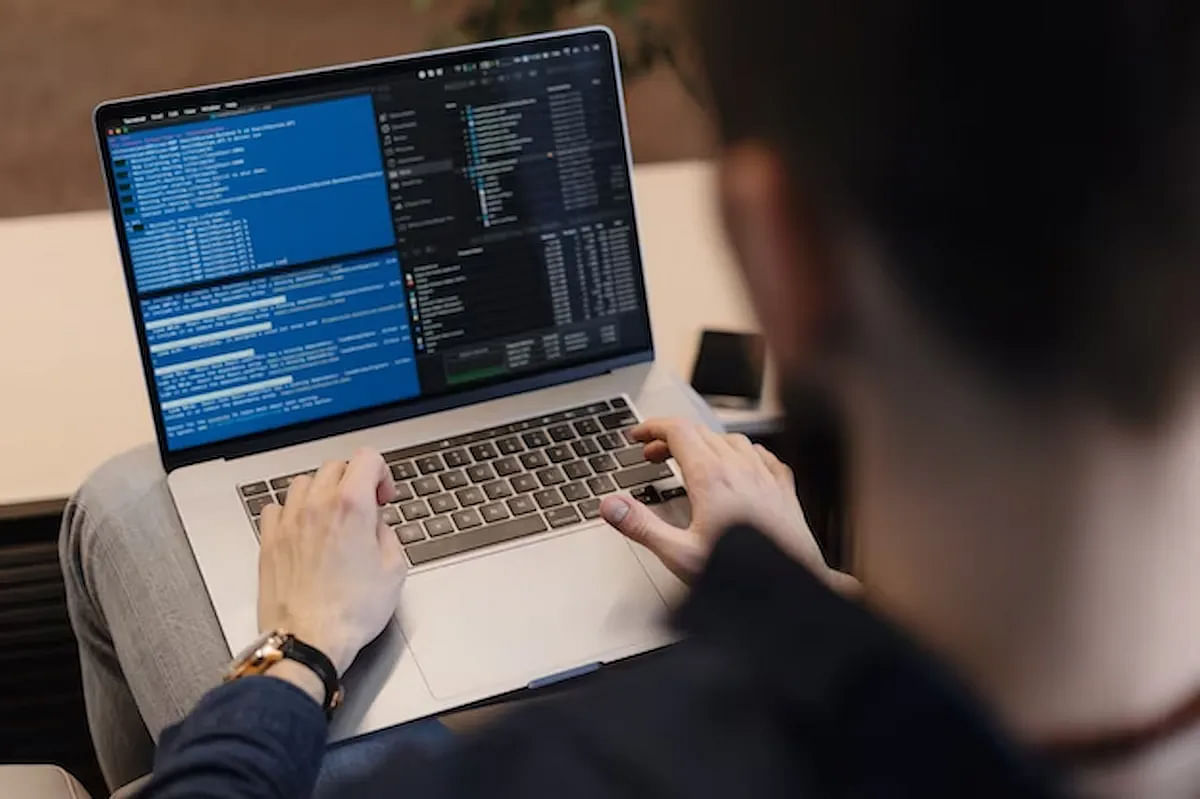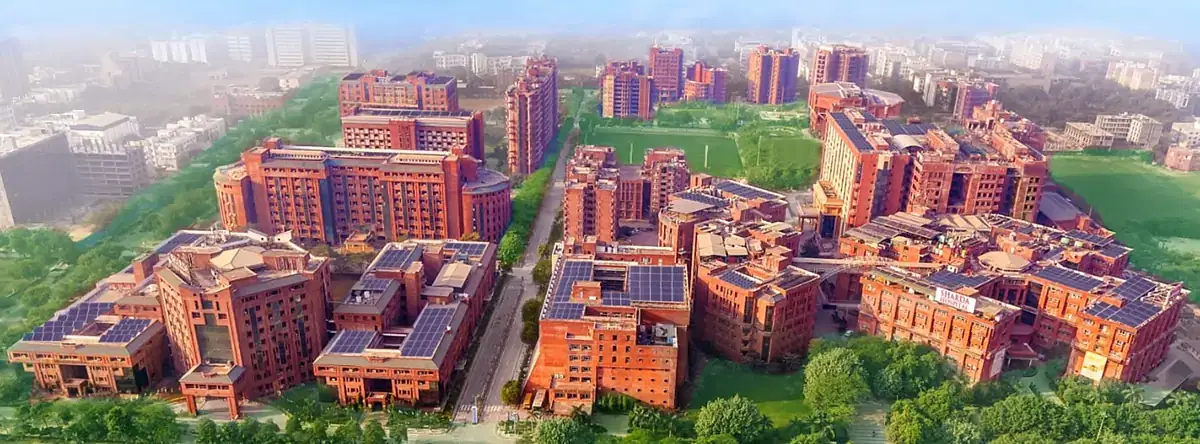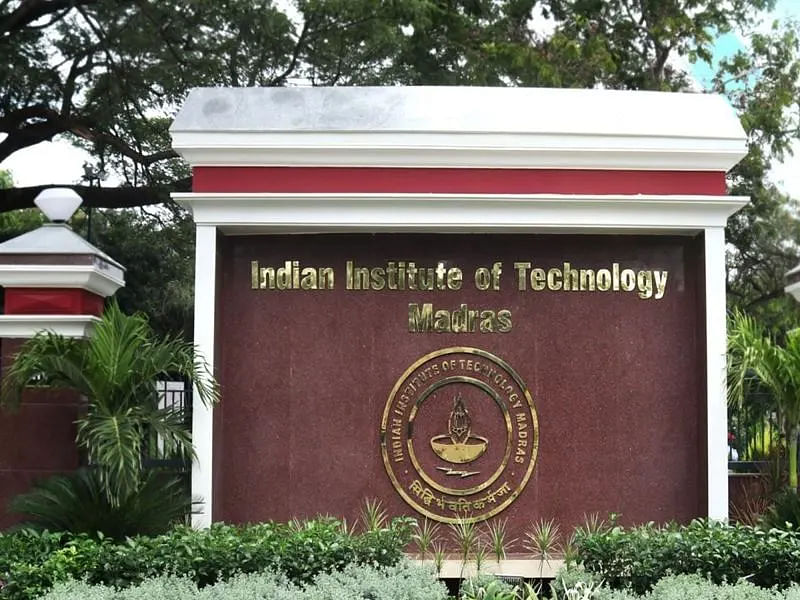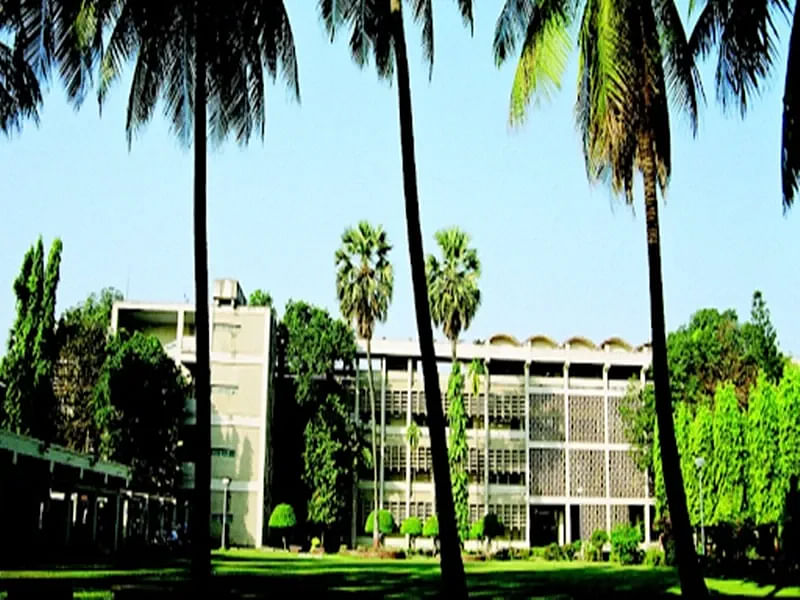Is being a Full Stack Developer your dream career option? Check out the complete step by step process on how to become a Full Stack Developer, Eligibility, Exams, Skills Required and Salary in 2023.
A Full-Stack Developer is a professional who builds and maintains a web or mobile application. They also work on making mobile and computer games. Importantly, they work on websites' front and back end and are adept in programming languages and tools. Moreover, they utilise resources through databases and servers to generate operational systems.
A career as a Full-Stack Developer is in high demand and is estimated to grow over 13% in the next 16 years. Due to huge market expansion, companies constantly search for skilled developers to join their tech teams. Apart from formal education, aspirants must learn programming languages, tools, development frameworks, database management and design tools to become full-stack developers with an attractive pay package.
Table of Contents
- How to Become a Full-Stack Developer?
- Who is a Full-Stack Developer?
- What Does a Full-Stack Developer Do?
- Skills Required for Full-Stack Developer
- Types of Full-Stack Developer
- Full-Stack Developer Salary
- Full-Stack Developer Career Path
- Pros and Cons of Becoming a Full-Stack Developer
How to Become a Full-Stack Developer?
Candidates can check the roadmap for Full-Stack Developer by following the below steps. Candidates need to properly understand their future job, complete the relevant Full-Stack developer course and fulfil the Full-Stack developer qualifications mentioned below.
- Step 1: Complete Academic Qualification
- Step 2: Learn Programming Languages and Tools
- Step 3: Get Familiar with Development Frameworks
- Step 4: Know the Database and Caching
- Step 5: Obtain a Full-Stack Developer Certification
- Step 6: Join a Full-Stack Developer Internship
- Step 7: Build a Portfolio
- Step 8: Begin a Job Search
Step 1: Complete Academic Qualification
Candidates must complete their school-level education (10+2) with Computer Science or similar subjects. Although a Full-Stack developer does not require formal education, candidates have a better chance of being recruited if they complete their Bachelor's degree. Some of the courses a potential candidate can pursue are given below:
|
Undergraduate Courses |
Postgraduate Courses |
|
Bachelor of Computer Application |
Master of Computer Application |
|
Bachelor of Science |
Master of Science |
|
Bachelor of Technology in Computer Science |
Master of Technology in Computer Science |
|
Bachelor of Technology in Computer Engineering |
Master of Technology in Computer Engineering |
|
Bachelor of Technology in Information Technology |
Master of Technology in Information Technology |
Step 2: Learn Programming Languages and Tools
Learning programming languages and tools is one of the most important steps to start a career as a Full-Stack Developer. These are the two core skill requirements in the job, and candidates must train themselves on topics such as Javascripts, SQL, Python etc.
Programming Languages for Full-Stack Learners
Full-Stack Development aspirants can learn the following programming languages to create websites and applications
|
Programming Language Names |
Mode of Learning |
Institutes |
Duration |
Fees |
|
HTML |
Online/Certificate |
NIIT, Skills Nurture, YouAccel Training, edX |
Up to 6 weeks |
INR 10,000 to INR 22,000 |
|
CSS |
Online/Certificate |
Udemy, edX, Skills Nature |
Up to 6 weeks |
INR 10,000 to INR 22,000 |
|
Bootstrap |
Online/Certificate |
TCG India, W3Schools, VSkill |
2 to 4 Weeks |
INR 3500 |
|
W3.CSS |
Online/Certificate |
W3webschool |
6 months |
INR 15,000 |
|
JavaScript |
Online/Certificate |
TCS iON, edX, Udemy, Udacity |
3 months |
INR 3878 to INR 22,849 |
|
HTML DOM |
Online/Certificate |
Mozilla, W3Schools, Udacity, Khan Academy |
Self-paced |
Free |
|
Python |
Online/Certification |
Google’s Python Class, Python Org, edX, W3schools |
1 to 6 months |
INR 3499 to INR 42,584 |
Full-Stack Development Tools
Additionally, candidates must improve their proficiency in the following tools, which Full-Stack Developers commonly use to enhance web development and output. The tools listed below will help increase efficiency of a Full-Stack developer, as they are used for different tasks such as communication, code writing etc.
- Visual Studio Code: Works as a source-code editor, syntax highlighter, code refactor etc.
- Webstorm: Increases efficiency by helping developers write JS code with minimal effort.
- Slack: A workspace to communicate with fellow team members about projects.
- Typescript: Enables candidates to arrange code for improved application.
- Electron: Helps in developing desktop apps through CSS JavaScript and HTML.
- GitHub: Real-time platform to collaborate on projects with other developers and programmers.
- CodePen: One-step solution for front-end development.
- Backbone: For structuring JavaScript code.
Step 3: Get Familiar with Development Frameworks
Besides knowing the layout and display aspects, a Full-Stack Developer must gain an in-depth understanding of development frameworks and tools. Therefore, candidates with strong foundations in the following frameworks have a better chance of bagging a position in a Company.
- Angular JS
- JQuery
- REACT
Besides learning these tools in BCA programmes, they can also take online Full-Stack Developer Certificate courses.
Step 4: Know Database and Caching
Candidates must understand and learn database management, which is integral to becoming a Full-Stack Developer. SQL and MongoDB are the two commonly used databases by Full-Stack Developers. Leaning databases will help optimise programming code, leading to better front and back-end performance.
Full-Stack Developer Books
Some Full-Stack developer books which may help candidates in their career-building process are listed below.
- The Full-Stack Developer by Chris Northwood
- Eloquent JavaScript by Marjin Haverbeke
- Full-Stack React Projects by Shama Hoque
- ASP.NET Core 3 and Angular 9 by Valerio De Sanctis
Step 5: Obtain a Full-Stack Developer Certification
Certifications will leverage a candidate’s resume, as they will support and validate their skills. Some certifications that will help candidates acquire a Full-Stack developer job in the future are mentioned in the table.
|
Certification |
Eligibility |
Exam/Certification Fee |
|
IBM Full-Stack Cloud Developer Professional Certificate |
Basics of HTML, Cloud computing and applications |
INR 2943 to INR 8830 |
|
JavaScript Certification - International JavaScript Institute |
Basics of Programming and Javascript |
INR 7293 |
|
CIW Database Design Specialist |
Basics of Database |
INR 12,311 |
|
Agile Software Development |
Basics of Computer and Internet |
INR 58,257 |
|
JavaScript and JQuery Essentials Training and Certification |
Basics of Programming |
INR 11,798 |
Step 6: Join a Full-Stack Developer Internship
To kickstart one's career as a Full-Stack Developer, an ideal route would be to take an internship first. An internship will last 3 to 6 months, where candidates will assist software engineers in developing and testing websites and applications.
In addition, an Intern Full-Stack Developer will work on reviewing existing software and applications. An intern will work alongside other internal teams in an organisation.
Step 7: Build a Portfolio
Next, candidates must prepare a portfolio which will display their job and enlist their knowledge of the technologies used, their role in structuring, and other details such as coding and design expertise.
The chances of being selected as a Full-Stack Developer increase when candidates submit their portfolio as evidence of achievements and work. Candidates can publish their code to the public repository on code versioning sites for potential employers.
Step 8: Begin a Job Search
The job hunting phase can be tasking as the job market for a Full-Stack Developer is competitive. Candidates must fulfil the following requirements to land Full-Stack developer jobs at the desired organisation.
- Craft a resume displaying your technical skills and abilities.
- Showcase your soft skills such as being a team player, management, time management and accountability.
- Include your portfolio.
- Enlist previous experiences.
- Put down your academic qualifications.
- Include your certifications.
Who is a Full-Stack Developer?
A Full-Stack Developer builds both the front and backend of websites and computer system applications. They use APIs, databases, servers and more to develop a backend and also construct the frontend using design, graphics and other tools to deliver a user interface for a smooth experience.
They are skilled individuals who manage web development projects and teams and are responsible for creating new websites and reengineering existing apps. Importantly, Full-Stack Developers handle end-to-end web-based programming.
What Does a Full-Stack Developer Do?
As candidates begin their careers, they must know a Full-Stack Developer's primary roles and responsibilities.
Designs Applications
A Full-Stack developer designs web-based applications such as,
- Software programs
- Mobile games
- Websites
They have to implement their backend knowledge to conceptualise and build software.
Tests and Maintains Apps
Full-Stack developers also helps in the following arena of,
- Testing apps to improve user experiences
- Debugging source codes
- Finding solutions in case of technical issues
Follows Client Briefs
The job of a Full-Stack developer requires them to understand client needs, in order to,
- Deliver the expected end results.
- Candidates must consider all specifications while weaving an application.
Skills Required for Full-Stack Developer
A Full-Stack developer must possess various skills, as working with computers requires in-depth knowledge of systems, languages and interpersonal skills. Some of the main skills candidates must work on developing are mentioned below.
- Technical Skills: Candidates must learn frameworks such as Javascript, Python, REACT, Angular JS, UI, UX, Design, etc, to create high-quality work.
- Teamwork: Candidates need to work in a collaborative setting as a Full-Stack developer. They must be able to lead, manage and follow directions to achieve a common goal in a big or small group.
- Eye-for-Detail: Since candidates will use various tools and technologies in their daily tasks, they must pay attention to every component to avoid errors.
- Communication Skills: Candidates need to communicate with internal stakeholders and fellow developers to bridge gaps and understand the deliverables of a project.
- Analytical Skills: Full-Stack developers will use code, scripts and sheets to record progress in app development. Moreover, they will work with database systems which require analytical skills.
- Management Skills: Candidates will work on tedious projects which require them to strategise and plan the process from beginning to end. Poor management of work can lead to problems.
Types of Full-Stack Developer
A Full-Stack developer will work in different domains. Hence candidates interested in becoming a Full-Stack developer can check the different posts of a FSD.
1. Cloud Full-Stack Developer
A Cloud Full-Stack Developer, also known as a Cloud Engineer, checks technical issues concerning the structuring and maintenance of cloud applications. Individuals strategise, implement, review and develop web applications while keeping the security aspect in mind.
2. Python Full-Stack Developer
A Full-Stack developer uses Python programming knowledge to build websites and applications. They write codes, debug, and work hand-in-hand with third-party web suppliers. They also work in the domain of web application logic for the server side.
3. Systems Full-Stack Developer
A systems Full-Stack developer makes background processing systems used to design mobile and web applications. They work in industries such as automotive, aerospace, and healthcare.
Full-Stack Developer Salary
The average Full-Stack developer salary is INR 5,30,000 PA. Candidates with experience and career progression can receive an average annual package of INR 16,00,000.
Candidates can check the salary package received based on the designation below.
|
Designation |
Average Annual Salary |
|
Software Developer |
INR 4,80,000 PA |
|
Java Developer |
INR 4,10,000 PA |
|
Salesforce Developer |
INR 5,00,000 PA |
|
UI Developer |
INR 4,20,000 PA |
|
Web Developer |
INR 3,00,000 PA |
|
Senior Software Developer |
INR 9,50,000 PA |
|
Front End Developer |
INR 4,00,000 PA |
|
PHP Developer |
INR 3,00,000 PA |
|
Senior Developer |
INR 10,90,000 PA |
Top Recruiters of Full-Stack Developers
Candidates can apply for jobs as Full-Stack Developers at the following companies.
- TCS
- Cognizant
- IBM
- Infosys
- Wipro
- Capgemini
- Accenture
- Deloitte
- Mindtree
Full-Stack Developer Career Path
Candidates can learn the Full-Stack developer career path to join the industry. The career progression will be as follows.
Junior Full-Stack Developer
As Jr. Full-Stack developers, candidates will report to senior developers and assist in creating and building web and mobile applications. They must be acquainted with JavaScript, CSS, HTML etc.
Full-Stack Developer
They work rigorously in creating websites and applications. They manage all technical issues to provide a smooth user interface. Candidates will be working on both front and back-end development in this post.
Full-Stack Engineer
They are responsible for devising and testing developed applications. Full-Stack Engineers will manage and head coding teams. They are also responsible for reporting to upper management with progress reports and highlighting issues that crop up.
API Engineer
An API engineer acts as a mentor to Full-Stack developers. They are responsible for creating, operating, and maintaining web applications. They must ensure all tasks are completed maintaining the brief.
Future Scope of a Full-Stack Web Developer in India
India’s demand for hiring Full-Stack developers has seen an exponential growth of 35% over the past 8 years. In fact, experts have determined that by 2024 the recruitment of Full-Stack Developers will increase all over the world. Being one of the highest paying jobs, let us check the pointers related to its scope in India.
- High Demand: Almost all companies in India require web solutions, which is why the demand for Full-Stack Developers has increased over the past years. Organisations look for skilled professionals who can build both front and back-end web applications.
- Flexibility: Candidates have the liberty to choose their work hours and place, which increases competency levels and is excellent for people looking for work-life flexibility.
- Vast Opportunities: India has a sea of opportunities for Full-Stack Developers, as they are more skilled than traditional programmers. With verified knowledge, they are able to acquire opportunities in start-ups to big fours.
- High Salary: Candidates in India are provided with a high salary package, ranging from INR 9 to 20 LPA. Depending upon the host of skills an individual possesses, a Full-Stack developer can earn an attractive package in India.
Pros and Cons of Becoming a Full-Stack Developer
Being a Full-Stack developer comes with both advantages and disadvantages. Below we will highlight the pros and cons of being a Full-Stack developer in India.
Pros of Becoming a Full-Stack Developer
The benefits of being a Full-Stack developer are mentioned below.
- Candidates receive a high Full-Stack developer salary package.
- Candidates possess massive programming knowledge, which provides a huge scope for growth.
- The job opportunities in the field are growing daily with the surge of web-based and IT companies.
- Candidates can work remotely if required.
Cons of Becoming a Full-Stack Developer
Next, candidates can check the cons of being a Full-Stack developer below.
- An immense workload can be overwhelming.
- Less opportunity to meet individuals in the field as most positions are remote.
- Technical training is lengthy, which can be a downside for many candidates.
- Candidates may be required to work on multiple projects simultaneously, which can be over-simulating.

















POST YOUR COMMENT